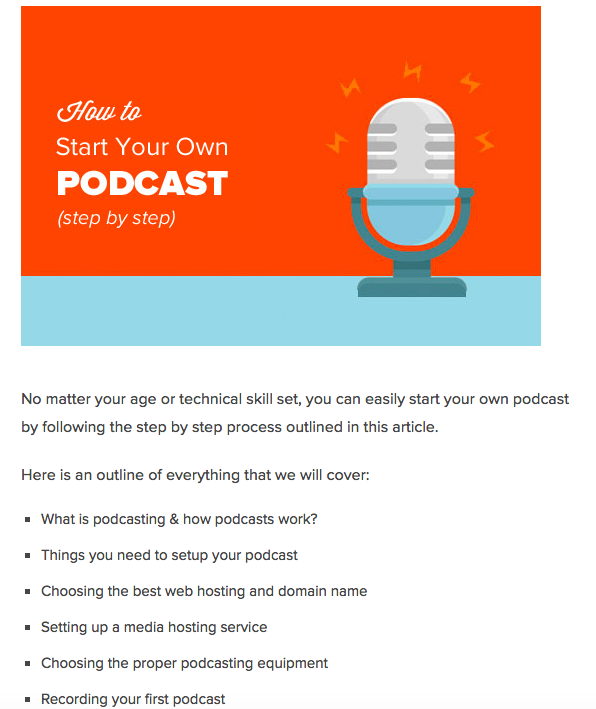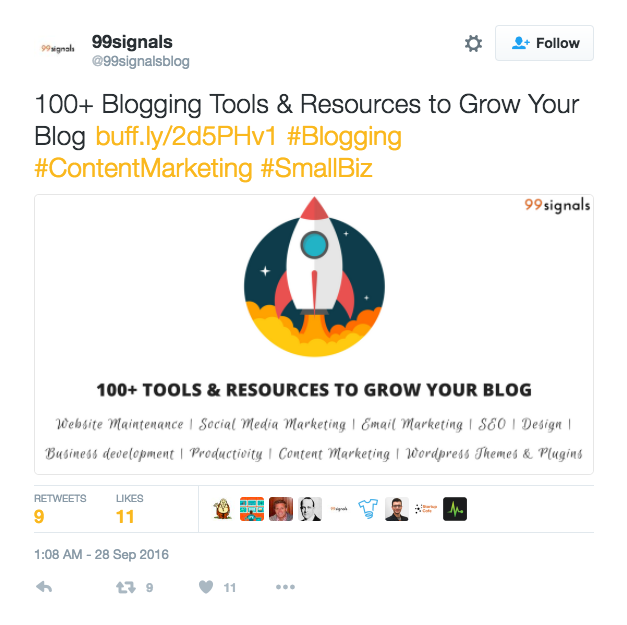4 Ways Content Marketing Can Boost Your Affiliate Referrals
By Zach Cannon December 16, 2016
With all the work that goes into affiliate marketing, creating compelling content for your audience is often a forgotten piece of the puzzle.
But you could be missing out on a huge opportunity to drive referrals: According to DemandMetric, content marketing costs 62 percent less than traditional marketing and generates around three times as many leads.
When you create valuable content for your audience and include affiliate links to the brands you’re referring, it opens up the opportunity to get in front of new audiences and convert new sales.
To help kick-start content creation for your affiliate marketing efforts, here are four tactics you can get implement today:
1. Product reviews
Product reviews are a powerful way to show your audience how you feel about a particular product or service – and they can have a huge impact on the purchasing decisions they make. In fact, 89 percent of consumers trust online reviews just as much as personal recommendations.
89 percent of consumers trust online reviews just as much as personal recommendations. Share on XTo ensure your product reviews help persuade your followers to try the product you’re recommending, there are a couple of best practices to keep in mind.
First, be sure to include a completely honest review that focuses on both the pros and cons. This way, your readers will have more realistic expectations of the product.
If you were to share a one-sided product review, it could do more harm than good – your referrals might expect a perfect product, and if those expectations aren’t matched, it could create a bad experience and damage your credibility.
Check out this example below from the product review site, Top Ten Reviews:
In this review, they manage to provide an honest recommendation by balancing the pros and cons of this anti-virus software.
By calling out the advantages of the product and including a “cons” section, they’re able to attract the right consumers to the product and be upfront about why it’s not the best purchase for others.
Another tip to keep in mind as you create your content? Include images and examples of how the product can be used.
The writers over at CNET do a great job of this in their Dark Sky weather app review below:
By including several images of the apps interface, it helps set accurate expectations for potential customers. They’ll know exactly what they’re buying, and how they can expect to use it.
As you craft your own reviews, consider what types of visuals you can use to accompany and support your content. And don’t forget to include your affiliate link by hyperlinking any relevant keywords or images or the products name!
2. Video
When most people think about content, they often go straight to blog posts, whitepapers and ebooks. However, video is a huge opportunity for content creators; according to Hubspot, 64 percent of users are more likely to buy a product online after watching a video. Not to mention, YouTube is the second most popular search engine after Google.
While you may be intimidated by the idea of filming your own videos, creating video content doesn’t have to be a hassle. Keep in mind that your first videos don’t need to be perfect, and that you’ll get better the more you try.
As you embark on creating video content for your affiliate marketing efforts, here are a couple of approaches you can take: a comparison video and a how-to video.
Comparison videos
Simply sharing your thoughts on a particular product or service is a good place to start with video, as this allows you to endorse a particular brand.
Sharing your thoughts on a particular product or service is a good place to start with video, as this allows you to endorse a particular brand. Share on XAWeber’s own customer and affiliate, Amy Schmittauer, does just that in her email comparison video review:
While Amy’s genuine endorsement speaks to pros and cons of both services, she ultimately recommends AWeber based on the fact that we provide all features for trial users.
Interested in learning more about creating engaging video content? Learn more.
How-to videos
Creating step-by-step instructions on how to use a product or service is another effective way to provide valuable resources for current and prospective customers.
By demoing the product and providing viewers with a virtual hands-on experience, you’re able to give them a behind-the-scenes look at how they can benefit from it.
John Corcoran, another one of AWeber’s affiliates, does a great job of using video as a platform to teach his audience how to set up a sign up form in AWeber:
This tactic is not only effective because it shows the value of the tool and helps spread the word about AWeber, it also helps current customers become more successful.
3. Blog articles
Writing a blog post that talks about your experience with a product or service can be a powerful way to share your endorsement towards a particular brand to your readers. And many affiliates do just that as a way to educate others and encourage referrals.
Not sure what to write about?
Try writing a “how-to” blog post on a topic you’re passionate about or an expert on. If creating video content is too daunting, writing a simple article can be an easy first step to creating engaging content for your affiliate marketing efforts.
Writing a simple article can be an easy first step to creating engaging content for your affiliate marketing efforts. Share on XIn this blog post example below, Syed Balkhi of wpbeginner does an excellent job teaching his audience about what it takes to start a podcast:
In addition to sharing best practices for podcasting, he includes his favorite products to help make it happen. Wherever he does, he makes sure to include his affiliate link along with the product or brand name. This way, he’ll get referral credit whenever someone clicks a link.
As you think of ways you can craft content for your readers (and promote referrals), consider how you can get testimonials from others to support your recommendations.
In this post from Blog Tyrant on how to start a food blog, the author provides valuable instructions and quotes from someone who had gone through the experience as well:
And the author made sure to include affiliate links to products he recommends.
4. Social Media
Social media sites like Facebook, Twitter and LinkedIn are powerful tools for marketers, businesses and influencers – and especially affiliate marketers who are looking to drive new referrals.
As you create new content (like the kind mentioned throughout this article), your social networks will be great places to distribute it to your followers and other audiences.
Here’s a social post from the blog 99Signals, who shared a blog post that highlights tools and resources for growing a blog audience:
Within the blog post, they share their affiliate link for a few of the products they recommend checking out.
As you craft your social posts, also consider how you can leverage industry-specific and popular hashtags. By adding them to the ends of your tweets and posts, you can expand your reach for those exploring content on the hashtag.
In this tweet from the popular daily deal site, Brad’s Deals, it features hashtags to get their blog post in front of a larger audience:
As you explore hashtags to add to your posts, make sure they are relevant to the content you share. Otherwise, it can come across as spammy.
Create engaging content today
While there are many ways to create content to help educate your audience and drive referrals, I encourage you to choose one tactic to try. As you learn what works and what doesn’t, you can make improvements to tailor content for your specific audience – and hopefully earn more commission.
Interested in learning more about affiliate marketing best practices? Check out my last post, The Do’s and Don’ts of Affiliate Marketing.
 87% off ends soon!
87% off ends soon! 






